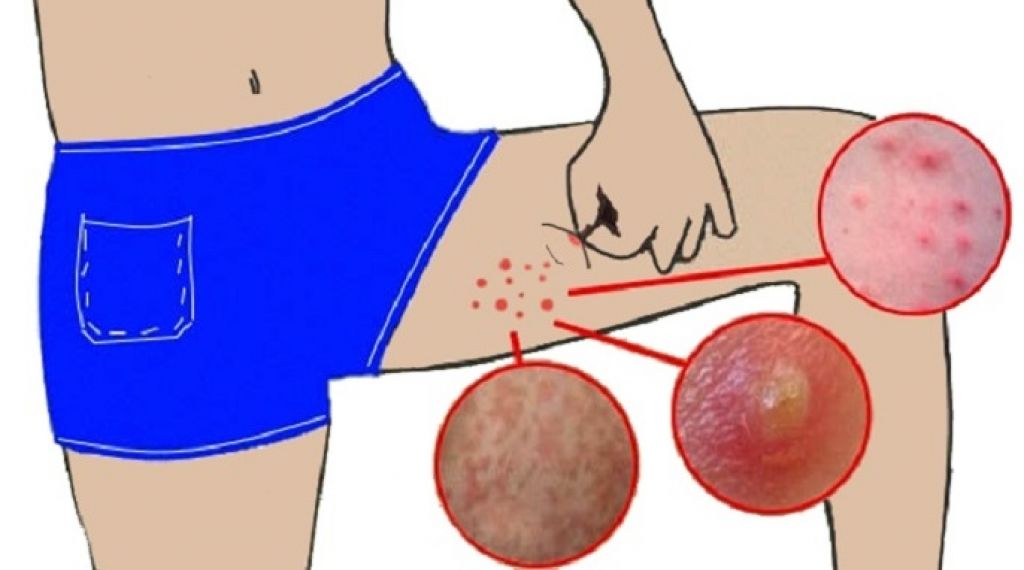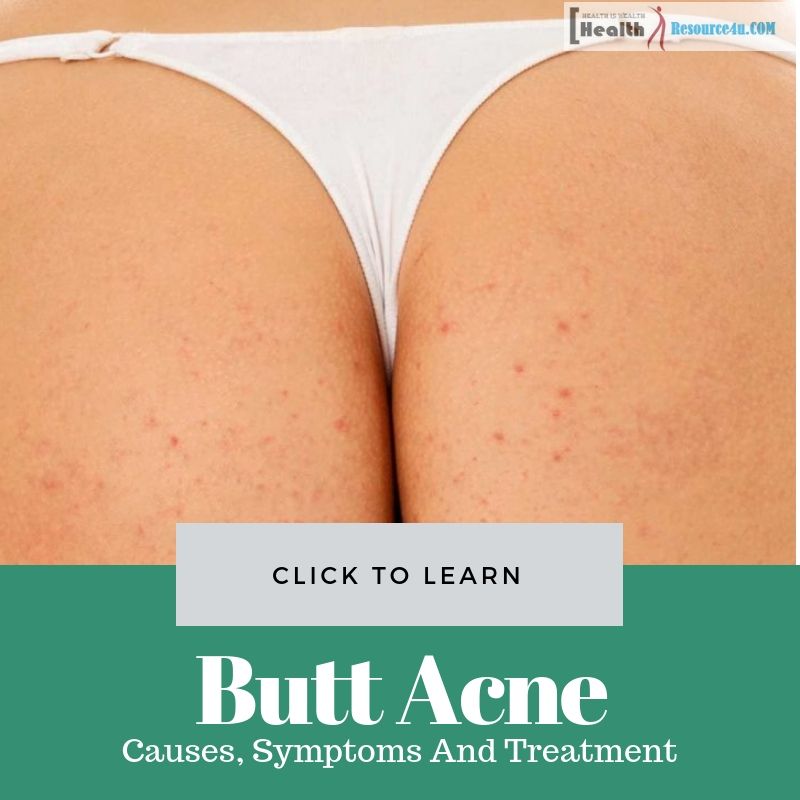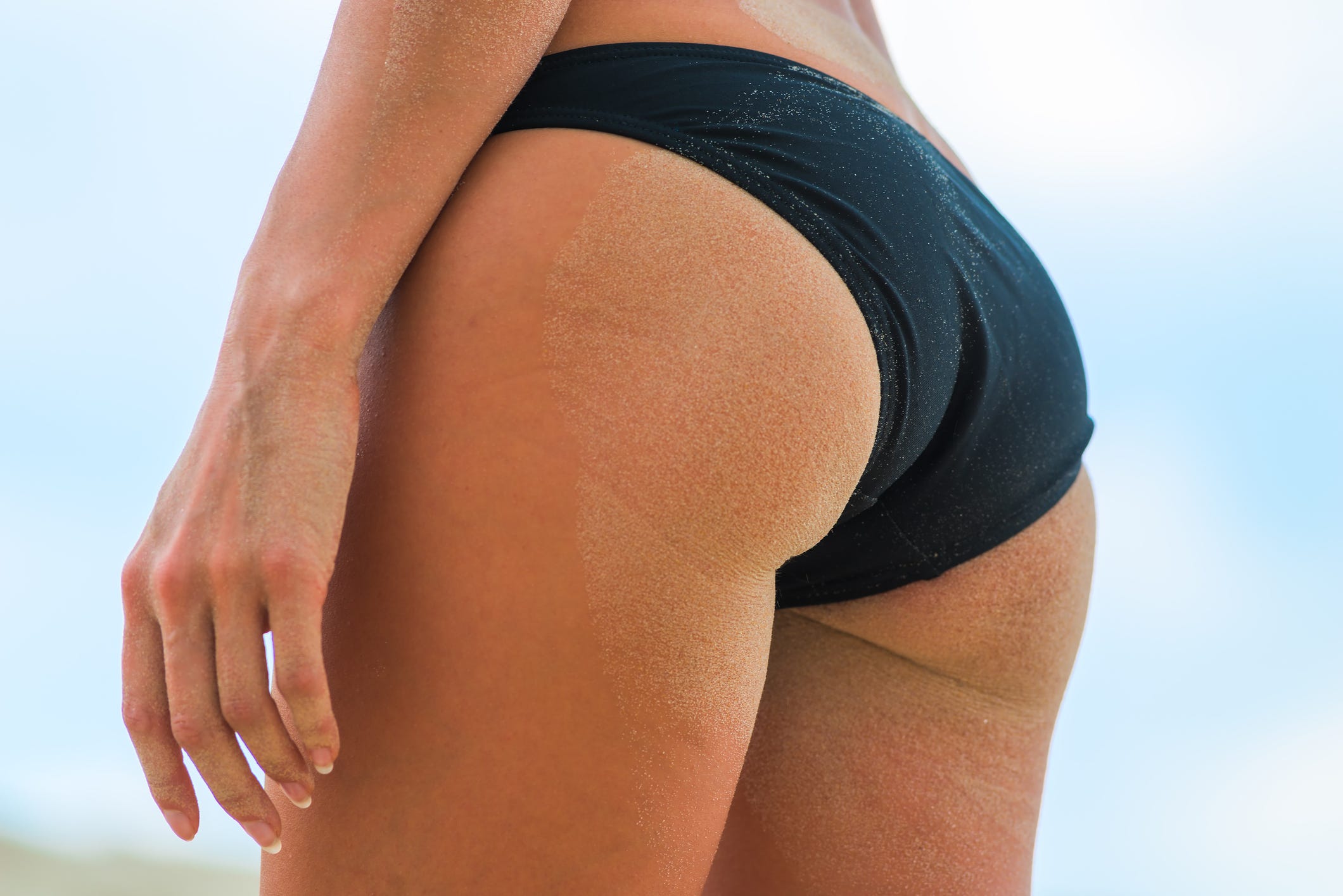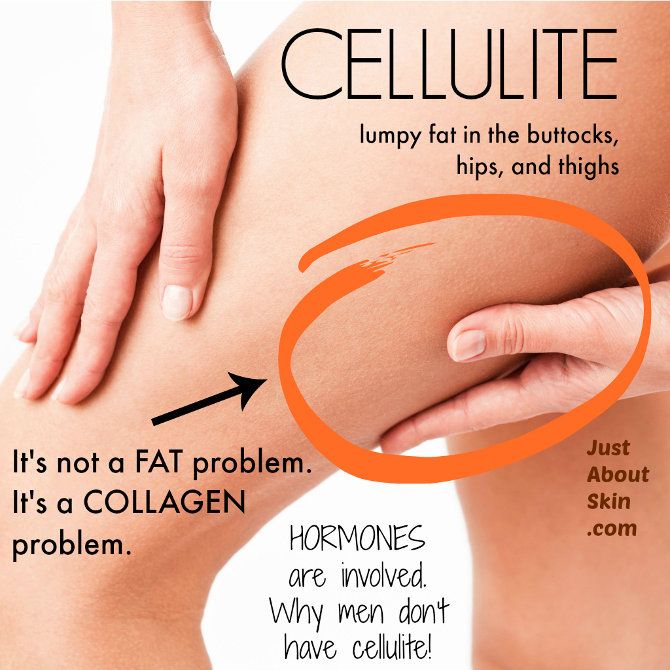Bumps on Inside of Buttocks: Causes, Symptoms, and Treatment Options
What causes bumps on the inside of buttocks. How to identify different types of anal lumps. When to seek medical attention for buttock bumps. What are the most effective treatments for anal bumps and lumps.
Common Causes of Bumps on the Inside of Buttocks
Discovering bumps on the inside of your buttocks can be concerning, but understanding the potential causes can help alleviate some anxiety. Let’s explore the most common reasons for these bumps:
Hemorrhoids
Hemorrhoids are swollen veins in the lower rectum and anus. They’re one of the most frequent causes of anal lumps. What are the typical symptoms of hemorrhoids?
- Painless bleeding during bowel movements
- Itching or irritation in the anal area
- Pain or discomfort
- Swelling around the anus
While hemorrhoids are often not serious, they can be uncomfortable. In many cases, they resolve on their own or with simple home treatments.
Anal Abscesses
An anal abscess occurs when a cavity near the anus becomes infected and fills with pus. What causes anal abscesses?

- Anal fissures (tears in the anal canal)
- Sexually transmitted infections
- Blocked anal glands
Abscesses can be quite uncomfortable, especially when sitting. They may require medical intervention to drain the pus and treat the infection.
Anal Tags
Anal tags are small, excess flaps of tissue around the anus. They’re usually painless and non-cancerous but can cause irritation or itching. What do anal tags look like?
- Small, skin-colored or darker flaps
- Usually painless
- May cause discomfort due to friction
While anal tags don’t typically require treatment, they can be removed if they cause discomfort or cosmetic concerns.
Anal Warts
Anal warts are caused by the human papillomavirus (HPV). They can develop around and inside the anus or in the genital area. What are the symptoms of anal warts?
- Itching
- Bleeding
- Mucus discharge
- Feeling of a lump in the area
It’s important to seek medical attention for anal warts, as they are contagious and can spread if left untreated.

Anal Fistulas
An anal fistula forms when bacteria and fecal matter invade an anal gland and create a tunnel into surrounding tissue. What are the signs of an anal fistula?
- Pain and swelling around the anal area
- Fever
- Fatigue
- Drainage of pus or blood
Anal fistulas often require surgical intervention to prevent complications.
Molluscum Contagiosum
Molluscum contagiosum is a viral skin infection that can affect the anal area. What does molluscum contagiosum look like?
- Small, flesh-colored or pink bumps
- Often have a tiny indentation in the center
- Can be itchy or sore
While molluscum contagiosum often clears on its own, treatment may be recommended to prevent spreading.
Identifying Symptoms of Anal Bumps and Lumps
Recognizing the symptoms associated with bumps on the inside of buttocks is crucial for proper diagnosis and treatment. What are the key symptoms to watch for?
- Pain or discomfort, especially when sitting or during bowel movements
- Itching or irritation in the anal area
- Bleeding or discharge
- Swelling or inflammation
- Changes in bowel habits
- Fever (in cases of infection)
If you experience any of these symptoms, particularly if they persist or worsen, it’s important to consult a healthcare professional for an accurate diagnosis.

When to Seek Medical Attention for Buttock Bumps
While some bumps on the inside of buttocks may resolve on their own, certain situations warrant immediate medical attention. When should you see a doctor?
- If the bump is hard to the touch or affects your movement
- If you experience severe pain or discomfort
- If there’s bloody discharge or persistent bleeding
- If you have a fever or other signs of infection
- If the bump grows rapidly or changes in appearance
- If you have a family history of colorectal cancer
Early intervention can prevent complications and ensure proper treatment. Don’t hesitate to consult a healthcare provider if you’re concerned about any unusual bumps or symptoms.
Diagnostic Procedures for Anal Lumps
Accurate diagnosis is crucial for effective treatment of bumps on the inside of buttocks. What diagnostic procedures might a doctor use?
Visual Examination
A doctor will typically start with a visual inspection of the affected area. This can help identify obvious causes like hemorrhoids or anal tags.

Digital Rectal Exam
In this procedure, the doctor inserts a gloved, lubricated finger into the rectum to feel for abnormalities. What can a digital rectal exam detect?
- Lumps or masses in the anal canal or rectum
- Tenderness or pain
- Abnormalities in the prostate (in men)
Anoscopy
An anoscopy involves inserting a small, hollow tube with a light into the anus to examine the anal canal and lower rectum. This can provide a more detailed view of any abnormalities.
Imaging Tests
In some cases, imaging tests may be necessary. What types of imaging might be used?
- Endoanal ultrasound: Uses sound waves to create images of the anal canal
- MRI: Provides detailed images of soft tissues and can be helpful in diagnosing fistulas
- CT scan: May be used to evaluate more complex cases or when cancer is suspected
Biopsy
If a lump appears suspicious, a doctor may perform a biopsy to examine the tissue under a microscope. This can help rule out or confirm more serious conditions like cancer.

Treatment Options for Bumps on Inside of Buttocks
The treatment for bumps on the inside of buttocks depends on the underlying cause. What are some common treatment approaches?
Conservative Treatments
For minor issues like small hemorrhoids or anal tags, conservative treatments may be sufficient. These can include:
- Sitz baths
- Over-the-counter creams or ointments
- Dietary changes to improve bowel movements
- Increased fiber intake and hydration
Medications
Depending on the cause, a doctor may prescribe medications. What types of medications might be used?
- Antibiotics for bacterial infections
- Antiviral drugs for viral infections like genital warts
- Topical steroids to reduce inflammation
- Pain relievers for discomfort
Minimally Invasive Procedures
For some conditions, minimally invasive procedures may be recommended. These can include:
- Rubber band ligation for hemorrhoids
- Sclerotherapy for small hemorrhoids
- Infrared coagulation for hemorrhoids or small warts
- Cryotherapy for warts
Surgical Interventions
In more severe cases or for certain conditions, surgery may be necessary. What surgical options are available?

- Hemorrhoidectomy for large or persistent hemorrhoids
- Fistulotomy for anal fistulas
- Excision of anal warts or tags
- Drainage of abscesses
The choice of treatment will depend on the specific condition, its severity, and the patient’s overall health.
Prevention Strategies for Anal Bumps and Lumps
While not all bumps on the inside of buttocks can be prevented, there are steps you can take to reduce your risk. What are some effective prevention strategies?
Maintain Good Hygiene
Proper hygiene is crucial for preventing many anal conditions. How can you maintain good anal hygiene?
- Clean the area gently but thoroughly after bowel movements
- Use unscented, soft toilet paper or wet wipes
- Avoid using harsh soaps or scrubbing the area
- Pat the area dry instead of rubbing
Practice Safe Sex
Some anal bumps, like warts, can be sexually transmitted. How can you reduce your risk?
- Use condoms during sexual activity
- Limit your number of sexual partners
- Get regular STI screenings
- Consider HPV vaccination
Improve Bowel Habits
Healthy bowel habits can prevent conditions like hemorrhoids and fissures. What can you do to improve your bowel habits?

- Eat a high-fiber diet
- Stay well-hydrated
- Exercise regularly
- Avoid straining during bowel movements
- Don’t ignore the urge to have a bowel movement
Manage Underlying Conditions
Some medical conditions can increase your risk of anal bumps. What conditions should you be aware of?
- Inflammatory bowel disease
- Chronic constipation or diarrhea
- Obesity
- Pregnancy
Managing these conditions effectively can help reduce your risk of developing anal bumps.
Living with Anal Bumps: Coping Strategies and Quality of Life
Dealing with bumps on the inside of buttocks can be challenging, both physically and emotionally. What strategies can help you cope?
Pain Management
Managing pain is often a primary concern. What are some effective pain management techniques?
- Over-the-counter pain relievers like acetaminophen or ibuprofen
- Warm sitz baths
- Ice packs to reduce swelling
- Topical numbing creams (under doctor’s guidance)
Emotional Support
The emotional impact of anal conditions shouldn’t be overlooked. How can you address the emotional aspects?

- Talk to a trusted friend or family member
- Join a support group for people with similar conditions
- Consider counseling if the condition is significantly affecting your mental health
Lifestyle Adjustments
Some lifestyle changes can help manage symptoms and improve quality of life. What adjustments might be helpful?
- Use a donut cushion when sitting for long periods
- Wear loose, breathable clothing
- Avoid activities that exacerbate symptoms
- Plan bathroom breaks to avoid constipation
Open Communication with Healthcare Providers
Maintaining open communication with your healthcare team is crucial. What should you discuss with your doctor?
- Any changes in symptoms
- Effectiveness of current treatments
- Concerns about medication side effects
- Impact on your daily life and relationships
Remember, while dealing with anal bumps can be uncomfortable and embarrassing, they are common medical issues that can often be effectively managed or treated. Don’t hesitate to seek professional help and support.

What’s That Lump in My Butt?
That new growth or lump in your butt is a cause for concern if it is hard to feel, affects your movements, or is accompanied by pain or a bloody discharge. If you are experiencing an unknown lump, wart, or abscess, schedule an appointment with award-winning and licensed gastroenterologists at Manhattan Gastroenterology to get the best medical care and advice regarding treatment, prevention, and care. The specialists diagnose and treat your unidentified lumps or anal warts most successfully using technological advancements and the latest research. They determine if the lumps in your rectal area are benign growths or a warning sign of some underlying condition and recommend the best solutions for treating them effectively.
Anal Fistula
An unknown lump in your butt can be pretty scary, especially when you cannot see what it is and identify what may be causing it. In most cases, such lumps or bumps can be treated by a simple clinical procedure, use of certain solutions, or prescribed medication. However, if these lumps are big or painful, surgery is the best option to remove them before they lead to critical complications.
However, if these lumps are big or painful, surgery is the best option to remove them before they lead to critical complications.
The anus is the opening at the lower part of the digestive tract. It is the place where stool exits the body. The anus is connected to the rectum, where the stool is stored before it comes out. The anus usually consists of soft tissues. Due to infections or medical conditions, these tissues can become hard, and in specific cases, even turn severe. When you touch these tissues, they feel like a hard lump in the area.
Knowing what can cause a lump in the butt, what symptoms it can produce, and what you can do about it can help you understand what is wrong and seek the best solution for your problem.
What is May Be Causing a Lump in the Butt?
Lumps, warts, masses, or papules in the anus are not uncommon, and there are several reasons why they appear. Hemorrhoids are one of the most common causes, but they are not critical and may not require any treatment if they are not big or painful. However, if your lumps or warts are resulting from anal abscesses or cancer, it is a serious matter that should be properly investigated before it turns dangerous.
However, if your lumps or warts are resulting from anal abscesses or cancer, it is a serious matter that should be properly investigated before it turns dangerous.
Treatment of these lumps depends on the underlying causes. Usually, lumps and warts go away with prescribed ointments or oral medication, but if they continue to grow in size or become painful, they require surgery.
Common Causes of Anal Lumps
A lump in or around your anus can be very uncomfortable, as well as terrifying, especially when you do not know what is causing it and how it can be treated. There could be several things causing the lump. They include:
- Anal abscess
- Anal warts
- Anal tags
- Anal fistulas
- Molluscum contagiosum
Anal Abscesses
An anal abscess occurs when a cavity in the anus develops an infection and gets filled with pus. The abscess can be uncomfortable, especially when you try to sit. You may get an abscess if you have had an anal fissure, a tear in the anal canal, a sexually transmitted infection, or blocked anal glands.
Anal Tags
Anal tags are small flaps or excess tissues around the skin that also feel like bumps. They result from friction and are mostly painless and non-cancerous, but they look unpleasant and can cause irritation or itching. Anal skin tags are usually either the color of your skin or darker.
If they are not painful, cause any irritation, or do not affect your movement, anal tags do not need any treatment. However, they can be taken out in a simple clinical procedure if you are not happy with the way they look and want to get rid of them.
Anal Warts
Anal warts are often caused by the human papillomavirus (HPV). The warts are uncomfortable as they develop around and inside the anus or on the genital area. They may appear smaller at the beginning, about the size of a pinhead, but they can grow large and cover the entire anal area with time. Anal warts can turn painful. Symptoms that indicate the presence of anal warts include:
- Itching
- Bleeding
- Mucus discharge
- Feeling a lump in the area
Do not take anal warts lightly, as they are not only painful but also contagious. Call your doctor for accurate diagnosis and treatment to prevent them from spreading further.
Call your doctor for accurate diagnosis and treatment to prevent them from spreading further.
Anal Fistulas
An anal fistula occurs when bacteria and fecal matter invade a gland in the anal region, then move into the surrounding tissue. Most anal fistulas are surrounded by pus. Signs of anal fistulas include:
- Pain and swelling around the anal area
- Fever
- Feeling tired
Anal fistulas can cause a lot of discomforts, and if left untreated, they may cause serious complications. Surgery is usually required to remove them. Also known as fistulotomy, the surgery converts the tunnel area between the skin and muscle into a groove that allows the anal tract to heal.
Molluscum Contagiosum
It is a skin infection that results from the molluscum contagiosum virus. Lesions can appear anywhere on the body where the skin has come into contact with the virus.
This virus can spread to the anus through sexual contact, by touching your anus after touching a lesion somewhere else on your body, or by sharing sheets or towels that are already infected. The lumps are generally small and range from the size of a pinhead to a pencil eraser and are pink, white, or flesh-colored. They can turn itchy and swollen, which makes them annoying.
The lumps are generally small and range from the size of a pinhead to a pencil eraser and are pink, white, or flesh-colored. They can turn itchy and swollen, which makes them annoying.
Lumps in the butt can result from several conditions. Diabetes, ulcerative colitis, Crohn’s disease, recurring constipation or diarrhea, or a sexually transmitted disease increase the risk for unknown lumps, abscesses, or warts.
What Does That Lump in the Butt Feel Like?
The main symptoms that occur with anal lumps include:
- Pain
- Discomfort with bowel movement
- Bleeding
- Anal itching
These symptoms may not be resulting from an anal lump result but coming from some other underlying condition. Most lumps are not a cause for concern but any growths or a hardened anal area should be screened by your doctor.
When to Seek Medical Help?
You should see your doctor if you notice a growth or lump in your butt. This lump or growth will most likely be benign, but you should not take it lightly, especially if you experience the following signs:
- Spreading or worsening pain
- Bleeding that does not stop
- Anal bleeding or pain, with a fever
- Changes in bowel movements
These symptoms could be a sign of infection or some underlying health issue that needs medical attention. They should be analyzed and treated before they do any lasting damage.
They should be analyzed and treated before they do any lasting damage.
Diagnosing Anal Lumps
The doctors recommend medications and treatment that decrease the lump and eliminate the underlying cause. They will ask some questions about your symptoms and also perform a physical exam by putting their gloved finger inside to feel for any abnormalities left by hemorrhoids, molluscum contagiosum, or anal warts.
In some cases, the doctor may use an anoscope, a lighted tube to view your anus and rectum closely and clearly, to recommend the best treatment.
The presence of unknown lumps in or near your butt is not only annoying, but it can result in discomfort or even pain if you don’t get it checked by a specialist timely. Most anal lumps or bumps are non-cancerous and can be treated with over-the-counter medications and home remedies. However, bloody discharge, painful bowel movements, and inability to sit comfortably require medical attention and surgical removal. These lumps could be resulting from serious diseases, and failure to seek treatment can result in lasting complications.
These lumps could be resulting from serious diseases, and failure to seek treatment can result in lasting complications.
Have your anal lumps checked by experienced and board-certified gastroenterologists at Manhattan Gastroenterology to reduce health risks? The top-rated physicians are experts in treating and preventing any type of lumps and diagnosing their underlying causes to ensure your long-term comfort and wellbeing.
Updated on Aug 27, 2022 by Dr. Shawn Khodadadian (Gastroenterologist) of Manhattan Gastroenterology
Pilonidal cyst: Symptoms, diagnosis, and treatment
Pilonidal cysts typically develop above the cleft of the buttocks. These swollen lumps occur when small holes in the skin, known as pilonidal sinuses, become infected.
Pilonidal cysts can lead to significant discomfort if they become infected. These cysts develop when a pilonidal sinus fills with fluid, pus, and other debris. A pilonidal sinus is a small hole or indentation in the skin, and it does not require treatment itself.
Pilonidal cysts and sinuses are both parts of the broader term pilonidal disease.
In this article, we detail the causes and symptoms of pilonidal cysts and explain what a person can do to treat and prevent them.
Pilonidal cysts are the result of an infection. What these cysts look like and the other symptoms that accompany them can differ among individuals.
Common symptoms of pilonidal cysts include:
- pain alongside skin discoloration and swelling
- pus or blood oozing from the cyst
- an odor from the pus
- pain when touched
- a fever
At present, the exact reason why pilonidal cysts develop is unclear.
Pilonidal cysts are more common in males than in females. People are also most likely to develop pilonidal cysts between puberty and 40 years old.
An abundance of hair in the buttock region may also increase a person’s risk of developing the condition — the word “pilonidal” means “nest of hair.”
Another possible cause of a pilonidal cyst is the result of applying force or friction to the area.
A doctor can diagnose a pilonidal cyst by carrying out a physical exam and asking the person questions. These questions may include:
- When did the symptoms first occur?
- Has this problem happened before?
- Have you had a fever?
The doctor will also assess the person’s family medical history.
As with any form of surgery, it is important that people take note of all instructions relating to at-home care, especially if gauze needs removing and repacking.
General advice for recovery includes:
- keeping the area clean
- checking for signs of an infection
- attending follow-up appointments
A pilonidal cyst may also cause complications, including the following:
- development of an abscess
- recurrence of the cyst
- a systemic infection that spreads through the body
In rare instances, pilonidal disease can progress into squamous cell carcinoma, a type of cancer.
Generally, the outlook for anyone with a pilonidal cyst is excellent, with a complete cure being possible.
Maintaining good hygiene around the area at the base of the spine is important. This helps prevent the development of pilonidal disease, as well as its recurrence if it does occur.
Steps that people can take to reduce the risk of pilonidal cysts developing include:
- keeping the area clean and dry
- keeping the area free of hair by shaving or using depilatory creams
- avoiding sitting for a long time
People who are overweight may also find that weight loss reduces the risk of cysts developing or recurring.
Pilonidal cysts occur when a pilonidal sinus, a small hole or indentation in the skin, becomes infected. This typically happens when hair or other debris fills the sinus. Pilonidal cysts tend to occur on a person’s lower back, just above the cleft of the buttocks.
A person with a pilonidal cyst may experience swelling, pain, and skin discoloration in the affected area. A doctor will typically treat pilonidal cysts with minor surgical procedures. They can perform these under local or general anesthetic.
They can perform these under local or general anesthetic.
The outlook for a person with pilonidal cysts is usually positive. Surgical treatment generally allows a person to return to their day-to-day life with little impediment.
People can help prevent pilonidal cysts by keeping the area around their buttocks clean and dry. Removing body hair through shaving or creams can also help.
Soft tissue sarcomas and rare soft tissue tumors (brief information)
In this text you will receive important information about soft tissue sarcomas and soft tissue tumors: how often children get sick, what types of tumors are and how the disease can proceed, why this type cancer appears in children, what are the symptoms, how they are diagnosed, how children are treated and what are their chances of being cured of this form of cancer.
author: Dipl. Biol. Maria Yiallouros, Dr. med. Stefanie Kube, Erstellt am 2015/05/16, editor: Dr. Natalie Kharina-Welke, Print permission: Prof. Dr. med. Ewa Koscielniak, Translator: Dr. Maria Schneider, last modified: 2022/07/01
Dr. med. Ewa Koscielniak, Translator: Dr. Maria Schneider, last modified: 2022/07/01
https://dx.doi.org/10.1591/poh.patinfo.weichteiltumor.kurz.20101215
Contents
- What are soft tissue sarcomas and rare soft tissue tumors?
- How common are soft tissue sarcomas in children?
- What types of tumors are there?
- Where can a tumor grow?
- Why do children get soft tissue sarcomas?
- What are the symptoms of the disease?
- How is the diagnosis made?
- How is a treatment plan made?
- How are soft tissue tumors treated?
- What protocols and registers are used to treat children?
- What are the chances of a soft tissue sarcoma/tumor being cured?
What are soft tissue sarcomas and rare soft tissue tumors?
The medical term soft tissue sarcomas (also called malignant soft tissue tumors) refers to a group of malignant tumors that start growing in muscles, ligaments, joints, or nerves [nerve tissue]. What all these diseases have in common is that the malignant change (mutation) begins in the progenitor cells of the soft tissues [soft tissues].
What all these diseases have in common is that the malignant change (mutation) begins in the progenitor cells of the soft tissues [soft tissues].
Soft tissues include a wide variety of tissue types: muscles, adipose and connective tissues, and tissues of the peripheral nervous system. Therefore, there are many different types/types of soft tissue sarcomas and rare soft tissue tumors. Among themselves, different types of sarcomas differ not only in their microscopic structure [histological] and in the type of cells from which they grew, but also in the incidence rate. Doctors talk about different biological behavior. That is, different types of tumors behave differently: they grow differently in the body (give metastases) and respond differently to treatment, such as chemotherapy [chemotherapy].
How common are soft tissue sarcomas in children?
In pediatric oncology, soft tissue sarcomas account for approximately 6.6%. In the group of diseases “solid tumors” in children and adolescents [solid tumor] they occupy the third place in terms of prevalence (after CNS tumors and neuroblastomas).
Approximately 140 children and adolescents fall ill with hard tissue sarcomas every year in Germany. Most often these are children under the age of five or six years. According to statistics, the average age of patients is 6 years. Boys get sick slightly more often than girls (ratio 1.2:1). It must be said that different types of soft tissue tumors have large age differences. Also, depending on the specific type of tumor, the sex ratio (sick boys and girls) changes.
What are the types of tumors?
Types of soft tissue tumors that are most common in children (up to and including age 21) are:
(When the word “embryonic” is used in a medical term, this does not mean that the process began in the embryonic (that is, intrauterine) period of a child’s development. Here, the word “embryonic” describes the specific type of tissue from which the tumor grew.) The name “alveolar” means that the appearance of the tumor resembles bubbles, as in the pulmonary alveoli. That is, the name “alveolar” also describes the properties/structure of the tumor tissue.)
That is, the name “alveolar” also describes the properties/structure of the tumor tissue.)
Where can a tumor grow?
Soft tissue sarcomas and soft tissue tumors can in principle grow anywhere in the body. Since these tissues are everywhere with us.
Often, tumors begin to grow along a specific anatomical structure, such as the course of muscle membranes, ligaments, or blood vessels. During this time, the tumor cells [cell] may separate from the tumor itself. And through the blood vessels or lymphatic vessels, they can enter different parts of the body. Where they hit, the cells settle and begin to multiply. This is how metastases begin to grow. If a child has a tumor in the soft tissues, then most often metastases grow in the lungs, in neighboring lymph nodes [lymph nodes] and in the skeleton. But metastases can also appear in any other organ.
When we talk about soft tissue sarcomas and rare soft tissue tumors, the specific type of tumor affects where exactly the tumor grows and how it grows:
The place of occurrence and the nature of the growth of soft tissue sarcomas and rare soft tissue tumors depend on the type of tumor. So, although rhabdomyosarcoma can develop in almost any organ, they are most common in the head and neck, genitals and urinary tract, and in the extremities. In addition, the nature of alveolar rhabdomyosarcomas is more aggressive than fetal rhabdomyosarcomas, which means faster growth and, as a rule, faster spread through the blood and lymphatics. The probability of recurrence of alveolar rhabdomyosarcomas is also higher than that of embryonic ones.
So, although rhabdomyosarcoma can develop in almost any organ, they are most common in the head and neck, genitals and urinary tract, and in the extremities. In addition, the nature of alveolar rhabdomyosarcomas is more aggressive than fetal rhabdomyosarcomas, which means faster growth and, as a rule, faster spread through the blood and lymphatics. The probability of recurrence of alveolar rhabdomyosarcomas is also higher than that of embryonic ones.
Extraosseous Ewing’s sarcomas and peripheral primitive neuroectodermal tumors, in contrast, are more common in the trunk and extremities. Synovial sarcomas develop primarily in the extremities near the joints, as well as in the head and neck. Both types of tumor are prone to rapid metastasis.
Why do children get soft tissue sarcomas?
The causes of soft tissue sarcomas and rare soft tissue tumors are still unclear. It is assumed that they come from immature cells of the connective soft tissue. In professional medical parlance they are called “mesenchymal stem cells”. The degeneration of cells in most cases occurs even before birth.
In professional medical parlance they are called “mesenchymal stem cells”. The degeneration of cells in most cases occurs even before birth.
There are indications of certain factors that contribute to the development of soft tissue sarcomas. So, in some families, frequent cases of the development of rhabdomyosarcoma can be observed. If someone in the family had carcinoma, then the children are at increased risk of getting rhabdomyosarcoma. These data indicate the genetic [genetic] conditionality of the development of the disease. An example of such a predisposition is neurofibromatosis disease, in which an increase in the incidence of peripheral nerve sheath tumors is noted.
However, in most patients with soft tissue sarcomas and rare soft tissue tumors, no predisposing factors can be identified.
What are the symptoms of the disease?
Signs of the disease (symptoms) in soft tissue sarcoma depend on the location and extent of the tumor and therefore can be very diverse. We will name some examples of the most common symptoms of the disease:
We will name some examples of the most common symptoms of the disease:
- soft tissue sarcomas and superficial tumors often cause swelling that increases and causes pain. Often, both symptoms are mistakenly regarded as the result of an injury, for example, when playing sports. With a tumor, these symptoms differ primarily in that they lead to a dysfunction of the affected organ – for example, to limit the mobility of an arm or leg.
- soft tissue sarcomas and tumors located in the orbital region may initially appear as a painless bulging outwards of the eyeball (and swelling of the eyelids; later, due to local pressure, pain is added. Visual impairment is also possible.
- soft tissue sarcomas and tumors located in the nasal area can often manifest as nasal congestion and runny nose long before the correct diagnosis is made.
- when the base of the skull is affected, the functions of the cranial nerves are disturbed, which, for example, can be manifested by double vision or paralysis of the facial nerve.

- Urinary tract and genital tumors may present when there is a general malaise, constipation and/or urinary passage problems, vaginal bleeding, blood in the urine [urine] and pain. But they appear already when the tumor is already very large.
Tumors in other areas of the body can often only be seen if the tumor mass can be felt or seen (eg, during routine pediatric examinations or if imaging studies [imaging techniques], such as ultrasonography, are done). These tumors do not cause complaints for a long time, and sick children feel well.
Of course, the complaints described here in a child or adolescent do not always mean the presence of soft tissue sarcoma or other malignant tumors. However, it is advisable to consult a pediatrician in order to thoroughly find out the reasons that caused these symptoms.
Good to know : If necessary, the pediatrician should refer the patient to a clinic specializing in pediatric and adolescent cancers. Primary diagnostics (imaging studies, biopsies) carried out outside such a clinic is often insufficient and can adversely affect the planning of therapy and the patient’s prognosis (that is, his chances of recovery).
Primary diagnostics (imaging studies, biopsies) carried out outside such a clinic is often insufficient and can adversely affect the planning of therapy and the patient’s prognosis (that is, his chances of recovery).
How is the diagnosis made?
If soft tissue sarcoma is suspected in a child, then a full examination is carried out by specialists of various profiles. First, they must confirm the diagnosis, whether the child really has this tumor. Secondly, if the diagnosis is confirmed, they must say what specific type of tumor the child has and how far the disease has spread throughout the body.
The whole scheme of work of specialists is described in the protocols of the “CWS-Guidance” and “Cooperativen Weichteilsarkom Studiengruppe” of the Society of Pediatric Oncologists and Hematologists (GPOH). This scheme of work is mandatory in order to optimally treat the child according to these protocols and give a prognosis. More details on the “CWS Guidance” will be given below .
Imaging studies
Imaging, such as magnetic resonance imaging (MRI), is done to diagnose soft tissue sarcoma or rarer soft tissue tumors. With this standard method, you can see exactly if there is a tumor; its volume and location, isolation from neighboring anatomical structures (internal organs, blood vessels, nerves), as well as distribution into the skeletal system.
Examination of tissue samples
For the final diagnosis in each case, microscopic (histological) and molecular genetic analysis is necessary.
They are made according to the tissue sample that was taken during the operation (biopsy). Since these tumors are very rare, it is important to evaluate the biopsy specimen not only by the pathologists of the clinic in which the child is located, but additionally in the reference laboratory of pediatric pathology at the Children’s Tumor Registry GPOH (Society of Pediatric Oncologists and Hematologists) in Kiel (Germany). This laboratory receives tissue samples from all over Germany, which has allowed it to gain a lot of experience in tumor recognition. In addition, the samples must necessarily be subjected to molecular genetic testing. Thus, the diagnosis receives additional confirmation, and the tumor can be characterized more fully, and this information is very important for treatment.
This laboratory receives tissue samples from all over Germany, which has allowed it to gain a lot of experience in tumor recognition. In addition, the samples must necessarily be subjected to molecular genetic testing. Thus, the diagnosis receives additional confirmation, and the tumor can be characterized more fully, and this information is very important for treatment.
Since fresh frozen tumor tissue samples are needed for molecular genetic testing, it is especially important to transfer the biopsy material to a specialized center with sufficient qualifications and capabilities for studying tumor tissue. The part of the biopsy not used in research should be sent to a special tumor tissue bank, where it can be used for scientific purposes in the search for opportunities to improve therapy. See below for information on tumor tissue banking.
Clarification of the diagnosis and search for metastases
To find metastases, the following examinations are performed: X-ray and computed tomography (CT) of the lungs, magnetic resonance imaging of the skull, skeletal bone scintigraphy, and bone marrow puncture. Depending on the clinical presentation and therapeutic situation, further additional investigations (eg, ultrasound and positron emission tomography (PET) may be required.
Depending on the clinical presentation and therapeutic situation, further additional investigations (eg, ultrasound and positron emission tomography (PET) may be required.
Examinations and analyzes before treatment
To check how various organs work, standard additional studies are carried out before starting treatment. In children, they check how the heart works (electrocardiogram-ECG and echocardiogram-EchoCG), how the brain works (electroencephalogram-EEG), check hearing (audiometry), kidneys and do various blood tests. If any changes occur during treatment, then they must be compared with the initial results of the examination. Depending on this, the tactics of treatment can be adjusted.
How is a treatment plan made?
After the final diagnosis is made, the doctors draw up a treatment plan. The specialists who manage the patient draw up an individual treatment program (the so-called risk-adapted treatment), which takes into account certain points. They are called risk factors (prognostic factors), and they affect the prognosis of the disease.
They are called risk factors (prognostic factors), and they affect the prognosis of the disease.
Patients are divided into risk groups – low risk, standard risk and high risk. Each group is treated according to its own plan. In order to determine the risk group and choose the right treatment plan, in Germany and in European countries they work according to the clinical guidelines “CWS-Guidance” (see below).
Important prognostic factors in children with soft tissue sarcoma or tumor are its location, size and prevalence; they are evaluated based on the results of the diagnostics described above.
- The type of tumor, that is, its microscopic characteristics (histology) also serve to assess how the disease responds to chemotherapy [chemotherapy] (there are chemotherapy-sensitive and non-responsive soft tissue sarcomas).
- And how big is the risk of metastasis and recurrence. Thus, experts distinguish between soft tissue sarcomas and tumors with favorable and unfavorable histology.

- The location of the tumor determines the possibility of its surgical removal and radiation therapy.↵
In addition, the age of the patient plays an important role. Thus, younger patients tolerate chemotherapy generally better than older ones. However, radiation therapy is performed quite rarely in children younger than 3 years (and especially younger than a year), only in some cases.
In order to achieve the best treatment outcome for each patient with the lowest risk of side effects and long-term effects, all these factors are taken into account when planning therapy.
How are soft tissue tumors treated?
Treatment options for children and adolescents with soft tissue sarcomas and rare soft tissue tumors include surgery, radiation therapy, chemotherapy, or a combination of these treatments.
Which therapy is optimal in each case depends mainly on the type and location of the tumor, as well as the age of the patient; in addition, it is necessary to take into account the prevalence of the tumor and its sensitivity to chemotherapy drugs (see above). The aim of treatment is to achieve a long-term state of health for the patient in such a way that the risk of complications of therapy and the development of long-term consequences remains as low as possible.
The aim of treatment is to achieve a long-term state of health for the patient in such a way that the risk of complications of therapy and the development of long-term consequences remains as low as possible.
Chemotherapy: In order to destroy all tumor cells (including those in tissue that can only be seen with diagnostic imaging, such as magnetic resonance imaging), chemotherapy must be a combination of various drugs that suppress cell multiplication and tumor growth (cytostatics), which are most effective against soft tissue sarcomas and tumors. Children receive cytostatics in several courses. Between courses of chemotherapy there are pauses that the child’s body rested.
Surgery and Radiation Therapy: Surgery to completely remove the tumor is often not planned as the first step in therapy; this means that the volume of the tumor must first be reduced by means of chemotherapy. Preparation for the operation is discussed in the clinic with the involvement of specialists from related disciplines (pediatric oncologist, surgeon, radiation therapist, radiologist) and is carried out very carefully. Of particular importance is the decision about the order in which the operation and radiation should be performed.
Of particular importance is the decision about the order in which the operation and radiation should be performed.
The Central Research Group for Soft Tissue Sarcomas (CWS) and the reference center are always ready to provide advice to medical institutions. Since soft tissue sarcomas are very rare diseases, operations should be carried out, if possible, in one center, where many years of experience in sarcoma surgery have been accumulated.
How are children treated with localized rhabdomyosarcoma?
According to the current CWS-Guidance, children with localized rhabdomyosarcoma are divided into risk groups depending on certain prognostic factors [prognostic factors]:
- low-risk group treatment consists of total tumor resection and chemotherapy consisting of two drugs (vincristine and actinomycin) for 22 weeks.
- group standard risk : for patients in this group, ifosfamide is added to therapy and radiation in most patients; duration of therapy is about 25 weeks.

- high-risk group depending on the location of the tumor and its extent, surgery is performed either before starting chemotherapy or at a later stage. All patients in this group receive radiation. Chemotherapy, consisting of ifosfamide, vincristine, actinomycin, and in some cases adriamycin, is continued for 25 weeks.
How are children treated with soft tissue sarcomas from the group of rhabdomyosarcomas?
Children with rhabdomyosarcoma soft tissue sarcomas (i.e., synovial sarcoma, extraosseous Ewing’s sarcoma, peripheral primitive neuroectodermal tumor, or undifferentiated sarcoma) are treated very similarly to those at high risk for rhabdomyosarcoma, but along with chemotherapy and surgery. treatment – the most important element is irradiation. The total duration of treatment is about 25 weeks – depending on the therapeutic group.
- Complete removal of a small tumor (so-called R0 resection) generally does not require further therapy, as the risk of recurrence is very low.
 By “complete resection” is meant not just the removal of the entire visible tumor, but in compliance with the so-called “safe distance”, that is, the removal of the tumor along with the healthy tissues surrounding it. In this case, the tumor tissue should not be affected or part of it should be cut off. These measures serve to avoid leaving small areas of the tumor invisible to the eye that can metastasize in the patient’s body.
By “complete resection” is meant not just the removal of the entire visible tumor, but in compliance with the so-called “safe distance”, that is, the removal of the tumor along with the healthy tissues surrounding it. In this case, the tumor tissue should not be affected or part of it should be cut off. These measures serve to avoid leaving small areas of the tumor invisible to the eye that can metastasize in the patient’s body. - Patients in the standard risk group who have a residual tumor after surgery, as well as those whose tumor size exceeded a certain size (5 cm) at the time of diagnosis, receive radiation adjacent to the operation.
- Patients at high risk (e.g. with affected lymph nodes and unfavorable location of the tumor) in addition to radiation also receive intensive chemotherapy for several weeks using a large number of drugs (such as vincristine, adriamycin, ifosofamide and actinomycin-D) .
How are children treated for non-rhabdomyosarcoma soft tissue sarcomas and rare soft tissue tumors?
In children with non-rhabdomyosarcoma soft tissue sarcomas, the type of therapy depends on the size of the tumor and the result of the operation:
How are children with metastases or relapses treated?
According to the CWS-Guidance, patients who have metastases receive chemotherapy consisting of ifosfamide, vincristine, actinomycin-D, carboplatin, epirubicin, and etoposide. An important role is played by local therapy (surgery and radiation). Intensive chemotherapy is followed by maintenance oral (that is, taken by mouth) therapy, which consists of trophosfamide, idarubbin, and etoposide. These medications are tablets (i.e. oral) so treatment can be done on an outpatient basis. The total duration of treatment is about a year.
An important role is played by local therapy (surgery and radiation). Intensive chemotherapy is followed by maintenance oral (that is, taken by mouth) therapy, which consists of trophosfamide, idarubbin, and etoposide. These medications are tablets (i.e. oral) so treatment can be done on an outpatient basis. The total duration of treatment is about a year.
Patients with a particularly poor prognosis may participate in so-called experimental therapeutic studies. These include, for example, one type of allogeneic transplantation [allogeneic stem cell transplantation], haploidentical stem cell transplantation. It is used as immunotherapy at the end of conventional treatment (further information can be found at the University Hospital Tübingen www.medizin.uni-tuebingen.de/kinder/ambulanzen/stammzelltransplantation/ and at the Center for Stem Cell Transplantation at the University Hospital Frankfurt am Main http:// www.szt.klinik.uni-frankfurt.de/szt.de/).
In non-responders and patients with relapse, the treatment used is taken into account. As a rule, this will be a different therapy, partly with the use of new drugs, which, although not used in the usual therapeutic plans, judging by the results of the latest research, show promise of success.
As a rule, this will be a different therapy, partly with the use of new drugs, which, although not used in the usual therapeutic plans, judging by the results of the latest research, show promise of success.
What protocols and registers are used to treat children?
In all major treatment centers, children and adolescents with soft tissue sarcomas are treated according to standardized protocols. The goal of all programs is to increase long-term survival and at the same time reduce long-term effects on the child’s body. In Germany, such programs/treatment protocols are developed and supervised by the Society of Pediatric Oncologists and Hematologists (GPOH). These are called Therapy Optimization Studies .
The experience of treating children over the past 30 years has shown that if not treated according to the protocol, the likelihood of survival was very small. Studies over the past 30 years have shown that in children treated outside of clinical trials for optimization of therapy,. In Germany, there is a regulation by the Federal Commission, according to which all patients with malignant diseases must be treated within the framework of the research of the Society of Pediatric Oncologists and Hematologists (GPOH). Cooperative study of soft tissue sarcomas under the pilot protocol “CWS-2002 P” completed in 2009year, numerous children’s clinics and medical institutions throughout Germany and other European countries took part in it
In Germany, there is a regulation by the Federal Commission, according to which all patients with malignant diseases must be treated within the framework of the research of the Society of Pediatric Oncologists and Hematologists (GPOH). Cooperative study of soft tissue sarcomas under the pilot protocol “CWS-2002 P” completed in 2009year, numerous children’s clinics and medical institutions throughout Germany and other European countries took part in it
In 2009, the CWS research team re-engineered the classic therapy optimization study for patients with soft tissue sarcoma and rare soft tissue tumors with new complementary objectives. The different parts of the study are divided so that there is now a registry covering all patients („ SoTiSaR “), a guide for the diagnosis and treatment of patients with soft tissue sarcoma and rare soft tissue tumors, and a randomized trial for a subset of patients ( “CWS-2007HR” ).
More details here
What are the chances of being cured of a soft tissue sarcoma/tumor?
The chances of children and adolescents recovering from soft tissue sarcoma or a rare type of soft tissue tumor depend on several factors. The most important of these are the specific type of tumor, its size, how much it has grown in the body at the time of diagnosis, whether the tumor can be removed surgically, and the age of the sick child.
The most important of these are the specific type of tumor, its size, how much it has grown in the body at the time of diagnosis, whether the tumor can be removed surgically, and the age of the sick child.
Because children with soft tissue sarcomas or rare soft tissue tumors have been treated according to the standard therapy optimization study protocols over the past decades, treatment outcomes have improved significantly. If back in the 70s only 30 to 40% of sick children survived, today the 10-year survival rate averages about 70%. Progress has been made due to the fact that approaches to the treatment of the disease are constantly being adjusted depending on the results of research.
If the confluence of different causes in a child develops favorably, then the results of long-term survival can exceed 80%. But if by the time of diagnosis the child has a very large tumor and it cannot be removed, the disease has already managed to spread to the lymph nodes, and/or the tumor has already managed to metastasize to other parts of the body, then this situation is unfavorable. And with it, the chances of long-term survival are reduced, as doctors say.
And with it, the chances of long-term survival are reduced, as doctors say.
Required note: The reported recovery rates are statistical figures. They accurately and reliably describe only the totality of patients with soft tissue sarcoma/tumor. Statistics cannot predict whether a particular child will recover or not. What is the specific prognosis of the disease in your child, ask the attending physician.
Soft tissue sarcomas and rare soft tissue tumors (brief information) / Weichteilsarcome/Tumoren (477KB)
CWS: Medical registries / protocols (Register/Studien) (409KB)
References:
- Kaatsch P, Spix C: Jahresbericht 2011. Deutsches Kinderkrebsregister, Universitätsmedizin der Johannes Gutenberg-Universität Mainz 2011 [URI: http://www.kinderkrebsregister.de/ dkkr/ veroeffentlichungen/ j ahresbericht/jahresbericht-2011. html]
KAA2011 - Koscielniak E: Weichteilsarkome.
 Leitlinie der Gesellschaft für Pädiatrische Onkologie und Hämatologie AWMF online 2011
Leitlinie der Gesellschaft für Pädiatrische Onkologie und Hämatologie AWMF online 2011
KOS2011 - Koscielniak E, Dantonello T, Klingebiel T: Weichteiltumoren – Neue Projekte der CWS-Studiengruppe: das Register „SoTiSaR für Weichteilsarkome und –tumoren sowie die multizentrische Studie CWS-2007-HR zur Behandlung von Patienten mit lokalisierten rhabdomyo sarkomartigen Weichteilsarkomen. Wir – die Zeitschrift der Deutschen Leukämie-Forschungshilfe e.V. und der Deutschen Kinderkrebsstiftung 3/2009 [URI: http://www.kinderkrebsstiftung.de/ fileadmin/ KKS/ files/ zeitschriftWIR/ 2009_3/ weichteiltumoren.pdf]
KOS2009 - Weihkopf T, Blettner M, Dantonello T, Jung I, Klingebiel T, Koscielniak E, Lückel M, Spix C, Kaatsch P: Incidence and time trends of soft tissue sarcomas in German children 1985-2004 – a report from the population-based German Childhood Cancer Registry. European journal of cancer 2008, 44:432 [PMID: 18077150]
WEI2008 - Klingebiel T, Koscielniak E: Weichteilsarkome, in: Kiess W, Merkenschlager A, Pfäffle R, Siekmeyer W (Hrsg.
 ): Therapie in der Kinder- und Jugendmedizin. Elsevier, Urban & Fischer, München Jena 1. Aufl. 2007, 820
): Therapie in der Kinder- und Jugendmedizin. Elsevier, Urban & Fischer, München Jena 1. Aufl. 2007, 820
KLI2007a - Klingebiel T, Koscielniak E: Weichteilsarkome, in: Rüben H (Hrsg.): Uroonkologie. Springer Verlag Heidelberg 4. Aufl. 2007, 657
KLI2007 - Treuner J, Brecht I: Weichteilsarkome. in: Gadner H, Gaedicke G, Niemeyer CH, Ritter J (Hrsg.): Pädiatrische Hämatologie und Onkologie Springer-Verlag 2006, 865 [ISBN: 3540037020]
TRE2006 - Claviez A: Rhabdomyosarkome. in Gutjahr P (Hrsg.): Krebs bei Kindern und Jugendlichen Deutscher Ärzte-Verlag Köln, 5. Aufl. 2004, 461 [ISBN: 3769104285]
CLA2004d
Big toe bump – signs, symptoms, who treats
Bunion of the big toe – hallux valgus or bony deformity at the base of the big toe, occurs when the big toe deviates towards the rest of the toes, pushing the joint at the base of the foot outward, causing a bony bump or protrusion on the inside of the foot.
Symptoms of thumb lump
The main symptoms are a bulging lump at the joint between the big toe and the rest of the foot, and associated pain and inflammation, which is usually aggravated by walking. As bursitis grows, inflammation and discomfort also increase. Other symptoms of the condition include:
- Swelling and redness around the joint on the inside of the foot
- Calluses and corns where the thumb touches the adjacent toe
- Decreased mobility in the joint
- Pain in the big toe which is aggravated by wearing shoes
- The thumb bows towards the rest of the fingers.
Causes of a lump on the big toe
Possible causes of the development of a lump on the big toe are:
- Genetic factors. It is believed that a certain type of foot is more susceptible to the development of bursitis
- Arthritis of the thumb joint
- Foot injuries
- Inappropriate shoes – The use of shoes with a narrow toe and high heels can also lead to an inward bending of the big toe and the development of a bony bump on the foot.

Is it possible to prevent the growth of a big toe bump
To prevent the growth of a bump, it is very important to pay attention to the development of the toes. If there are calluses or corns on the inside of the big toe, or some deformity is noticed, it is recommended to take some measures to prevent the condition from worsening. It may not be possible to prevent bursitis, but the best way to reduce the risk is to wear the right footwear:
- The shoe fits true to size and allows free movement of the toes.
- Avoid shoes with high heels or pointed toes
- Shoes must conform to the shape of the foot.
How a doctor diagnoses the cause of a big toe bump
An orthopedist diagnoses and treats a big toe bump. The root cause of the neoplasm is usually determined by:
- Orthopedic examination
- Thumb x-ray
- CT foot
- Foot MRI.
How a Doctor Treats a Big Toe Bump
Big Toe Bump is often a manageable condition and non-surgical symptom management should always be used before surgery. These include:
These include:
- Painkillers or anti-inflammatory drugs
- Local application of ice packs
- Special gel or fleece insoles
- Splints and toe braces also allow the foot to feel more comfortable when walking.
Surgery, called a bursectomy, is reserved for severe cases where it becomes very difficult for the patient to walk. With this operation, the surgeon can straighten the finger and also remove the bony prominence and swollen tissue. However, full recovery may take weeks or even months, and even then the bursitis may reappear. For this reason, it is important to wear only suitable shoes and take care of your feet after surgery.
Share:
The best doctors in St. Petersburg
Abzianidze Alexey Vadimovich
Rating: 5 / 5
Enroll
Aliev Murad Ramazanovich
Rating: 5 / 5
Enroll
Angelcheva Tatyana Avramovna
Rating: 4.8 / 5
Enroll
Antonov Ilya Alexandrovich
Rating: 4. 8 / 5
8 / 5
Enroll
Akhmedov Kazali Muradovich
Rating: 4.9 / 5
Enroll
Bayzhanov Abylkhair
Rating: 4.6 / 5
Enroll
Scientific sources:
- A. Belyaeva Features of the blood supply to the foot with a rigid first toe / A.A. Belyaeva, G.N. Kramarenko, I.S. Istomina // Orthopedics, traumatology and prosthetics. 1991. – No. 7. – S. 29-32.
- Musalatov H.A. To the question of the pathogenesis and features of surgical treatment of valgus deformity of the first toe / Kh.A. Musalatov, T. Wellens Ananyeva, N.V. Petrov // Medical assistance. – 2004. – No. 1. – S. 12-14.
- Trofimov N.P. On the causes of valgus abduction of the first toe / N.P. Trofimov // Orthopedics, traumatology and prosthetics. -1983. -No. 5. -S. 44-46.
- Buali N.M. Surgical treatment of valgus deformity of the first toes /N.M. Bouali: Dis. . cand. honey. Sciences. M., 1998. – 128s.
- Boyarskaya V.P. A new method for the treatment of rigid first toe / V.
 P. Boyarskaya, S.O. Darakhvalidze // Foot and issues of constructing rational shoes: Mat. 5th plenum of the interdepartmental commission on foot and rational footwear. M., 1980. – S. 81-83.
P. Boyarskaya, S.O. Darakhvalidze // Foot and issues of constructing rational shoes: Mat. 5th plenum of the interdepartmental commission on foot and rational footwear. M., 1980. – S. 81-83.
Useful information
Longitudinal flatfoot
Flat feet does not give the status “D” – unfit for military service. Longitudinal flat feet of the 1st degree is a deformation:
vault angle: from 131° to 140° inclusive
arch height: more than 24 mm.
read more +
Arthritis
Arthritis in most cases gives the status “D” – unfit for military service in case of arthritis and arthropathy of infectious, inflammatory and autoimmune origin, systemic connective tissue diseases with significant dysfunction, persistent and pronounced changes. There are 5 categories of fitness for a person liable for military service for health reasons:
read more +
Foot MRI
MRI of the foot is a modern diagnostic method, and with its help you can get valuable information about the situation with this area of the human body.




 By “complete resection” is meant not just the removal of the entire visible tumor, but in compliance with the so-called “safe distance”, that is, the removal of the tumor along with the healthy tissues surrounding it. In this case, the tumor tissue should not be affected or part of it should be cut off. These measures serve to avoid leaving small areas of the tumor invisible to the eye that can metastasize in the patient’s body.
By “complete resection” is meant not just the removal of the entire visible tumor, but in compliance with the so-called “safe distance”, that is, the removal of the tumor along with the healthy tissues surrounding it. In this case, the tumor tissue should not be affected or part of it should be cut off. These measures serve to avoid leaving small areas of the tumor invisible to the eye that can metastasize in the patient’s body. Leitlinie der Gesellschaft für Pädiatrische Onkologie und Hämatologie AWMF online 2011
Leitlinie der Gesellschaft für Pädiatrische Onkologie und Hämatologie AWMF online 2011 ): Therapie in der Kinder- und Jugendmedizin. Elsevier, Urban & Fischer, München Jena 1. Aufl. 2007, 820
): Therapie in der Kinder- und Jugendmedizin. Elsevier, Urban & Fischer, München Jena 1. Aufl. 2007, 820
 P. Boyarskaya, S.O. Darakhvalidze // Foot and issues of constructing rational shoes: Mat. 5th plenum of the interdepartmental commission on foot and rational footwear. M., 1980. – S. 81-83.
P. Boyarskaya, S.O. Darakhvalidze // Foot and issues of constructing rational shoes: Mat. 5th plenum of the interdepartmental commission on foot and rational footwear. M., 1980. – S. 81-83.